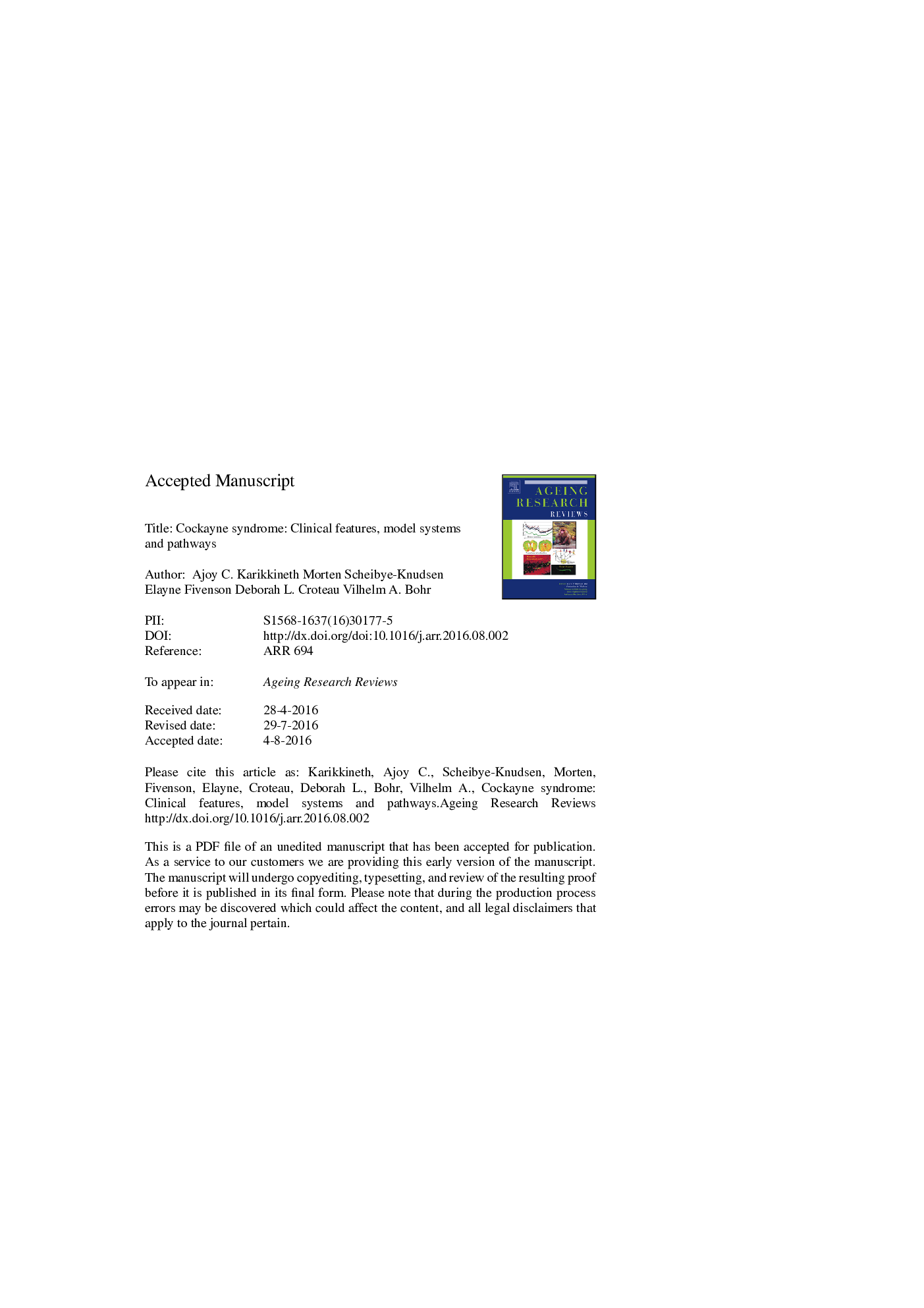| کد مقاله | کد نشریه | سال انتشار | مقاله انگلیسی | نسخه تمام متن |
|---|---|---|---|---|
| 5500689 | 1534300 | 2017 | 31 صفحه PDF | دانلود رایگان |
عنوان انگلیسی مقاله ISI
Cockayne syndrome: Clinical features, model systems and pathways
دانلود مقاله + سفارش ترجمه
دانلود مقاله ISI انگلیسی
رایگان برای ایرانیان
کلمات کلیدی
موضوعات مرتبط
علوم زیستی و بیوفناوری
بیوشیمی، ژنتیک و زیست شناسی مولکولی
سالمندی
پیش نمایش صفحه اول مقاله

چکیده انگلیسی
Cockayne syndrome (CS) is a disorder characterized by a variety of clinical features including cachectic dwarfism, severe neurological manifestations including microcephaly and cognitive deficits, pigmentary retinopathy, cataracts, sensorineural deafness, and ambulatory and feeding difficulties, leading to death by 12 years of age on average. It is an autosomal recessive disorder, with a prevalence of approximately 2.5 per million. There are several phenotypes (1-3) and two complementation groups (CSA and CSB), and CS overlaps with xeroderma pigmentosum (XP). It has been considered a progeria, and many of the clinical features resemble accelerated aging. As such, the study of CS affords an opportunity to better understand the underlying mechanisms of aging. The molecular basis of CS has traditionally been ascribed to defects in transcription and transcription-coupled nucleotide excision repair (TC-NER). However, recent work suggests that defects in base excision DNA repair and mitochondrial functions may also play key roles. This opens up the possibility for molecular interventions in CS, and by extrapolation, possibly in aging.
ناشر
Database: Elsevier - ScienceDirect (ساینس دایرکت)
Journal: Ageing Research Reviews - Volume 33, January 2017, Pages 3-17
Journal: Ageing Research Reviews - Volume 33, January 2017, Pages 3-17
نویسندگان
Ajoy C. Karikkineth, Morten Scheibye-Knudsen, Elayne Fivenson, Deborah L. Croteau, Vilhelm A. Bohr,